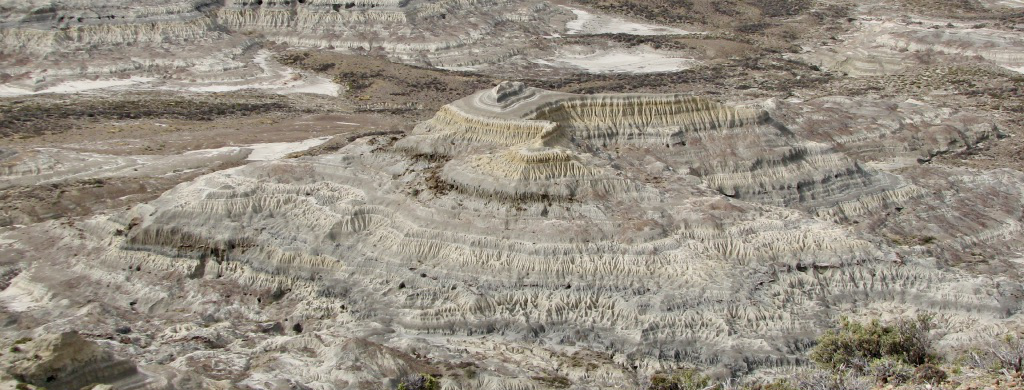
Paleoclimate of Patagonia
Fossil‐rich sediments of the Santa Cruz Formation, Patagonia, Argentina, span the initiation of the Miocene Climatic Optimum (MCO), the most recent period of warm and wet conditions in the Cenozoic. These conditions drove the expansion of tropical and subtropical ecosystems to higher latitudes, with the fossiliferous Santa Cruz Formation recording one of the southernmost examples. We collected new carbon and oxygen isotope compositions of herbivore tooth enamel from fossils ~17.4 to 16.4 Ma in age to investigate ecological and climatic changes across the initiation of the MCO.

Mean annual precipitation and temperature modeled from the tooth enamel stable isotope compositions of Santa Cruz Formation Mammals
Enamel δ13C values are consistent with a C3‐dominated ecosystem with moderate precipitation and a mix of wooded and more open areas. Serially sampled teeth reveal little zoning in δ13C and δ18O values, suggesting little seasonal variation in water and plant isotope compositions or seasonal changes in diet. Carbon isotope‐based estimates of mean annual precipitation (MAP) are consistent with aridification, with MAP decreasing from ~1,000 ± 235 mm/yr at 17.4 Ma to ~525 ± 105 mm/yr at the start of the climatic optimum (~16.9 Ma). This decrease corresponds to increasing global temperatures, as indicated by marine proxy records, and was followed by a rebound to ~840 ± 270 mm/yr by ~16.4 Ma. In comparison to a modern mean annual temperature (MAT) in the region of ~8°C, oxygen isotopes indicate high MAT (at least 20°C) at the onset of the MCO at 16.9 Ma and a significant increase in MAT to ~25°C by 16.4 Ma.